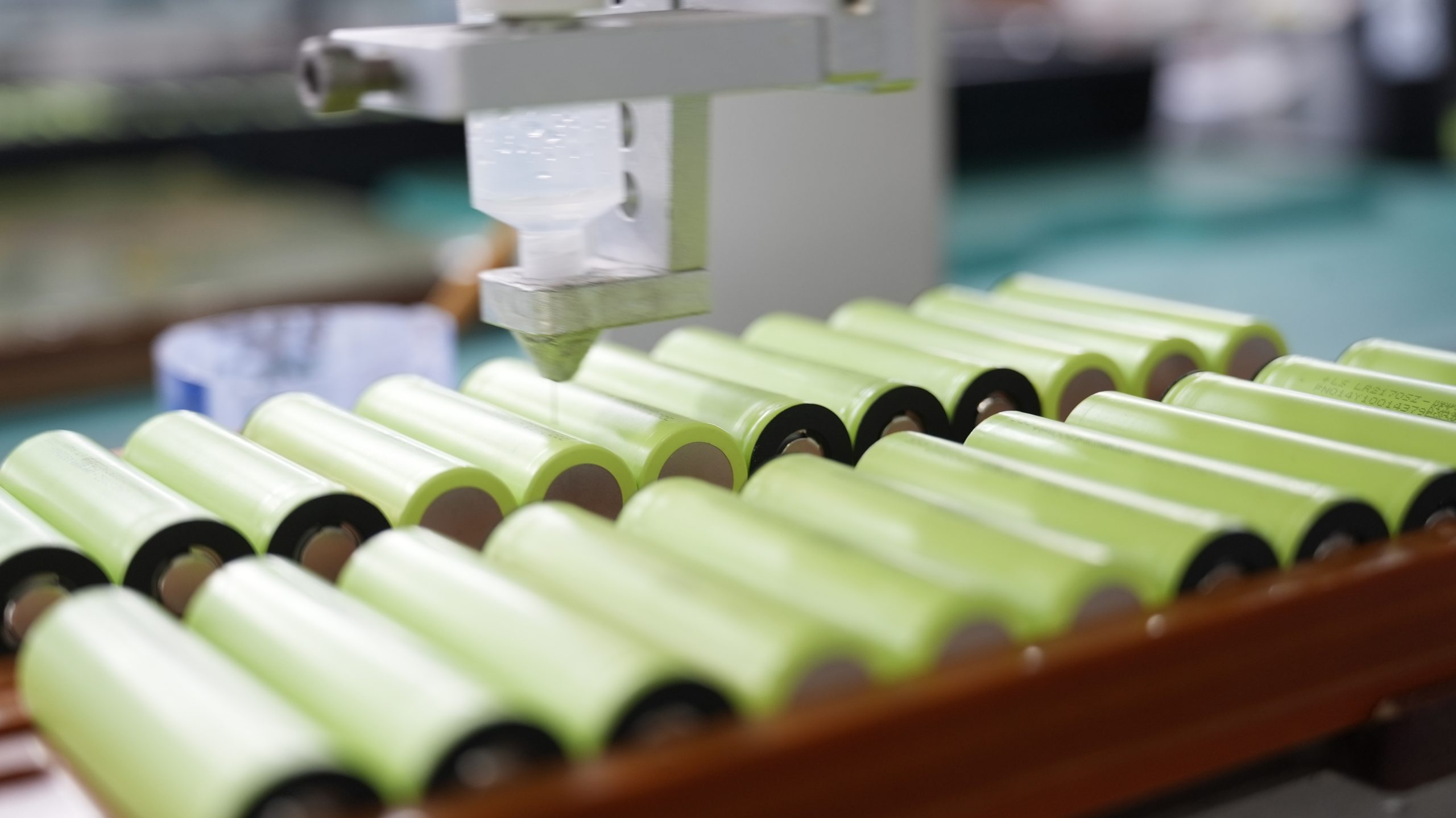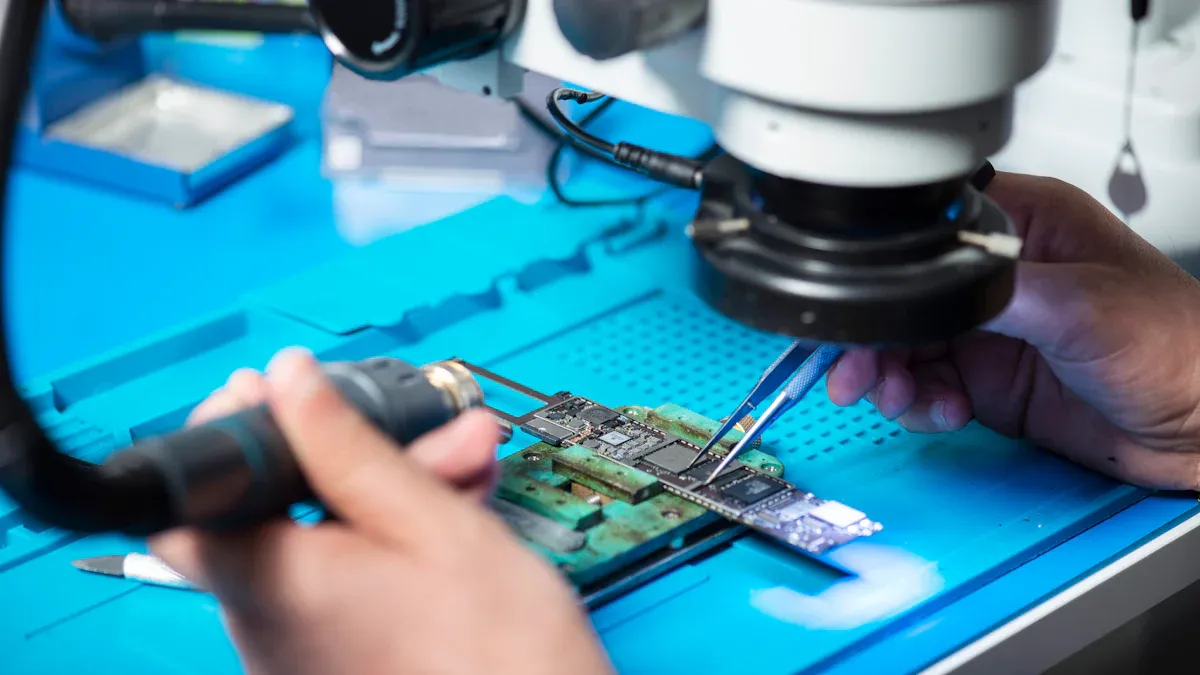
You need reliable, safe, and long-lasting power sources for your laboratory equipment. Lithium Battery Solutions stand out as the preferred choice, with lithium-ion chemistry dominating research and production quality control. You often see battery cyclers for testing cycles and battery analyzers for capacity checks. Environmental chambers help simulate real-world conditions. Each solution supports your lab’s need for accuracy and efficiency.
Key Takeaways
Choose lithium batteries for reliability and accuracy in laboratory equipment. They ensure consistent performance and reduce downtime.
Select the right battery chemistry based on your needs. Consider factors like cycle life, energy density, and safety features to optimize performance.
Handle and store lithium batteries properly to extend their lifespan. Keep them cool, dry, and at a partial charge to prevent damage.
Always verify compatibility and certifications before using lithium batteries. This ensures safe operation and compliance with regulations.
Regularly inspect batteries for signs of damage. Early detection of issues can prevent safety hazards and maintain equipment efficiency.
Part 1: Key Benefits
1.1 Reliability
You rely on your laboratory equipment to deliver accurate results every time. Lithium Battery Solutions offer high reliability, which is essential for research and testing environments. You can measure reliability using several key metrics:
Metric | Description |
|---|---|
Capacity Fade | Loss of battery capacity over time due to aging effects. |
Power Fade | Increase in internal resistance during battery life, affecting performance. |
Discharge Rate Capability | Ability to maintain voltage and deliver capacity at various discharge currents. |
Charge Rate Capability | Maximum safe charging rate without compromising safety or cycle life. |
Efficiency Measurement | Ratio of energy discharged to energy input, indicating energy losses during cycles. |
Cycle Life Testing | Repeated charging and discharging until capacity degrades to a set percentage. |
Self-Discharge Rate | Rate at which a battery loses charge when not in use. |
These metrics help you track battery health and ensure your equipment stays operational.
1.2 Longevity
Long-lasting power is a top priority in laboratory settings. Lithium Battery Solutions provide impressive cycle life, reducing the need for frequent replacements. Here is a comparison of typical cycle life ranges for common lithium battery chemistries:
Battery Chemistry | Typical Cycle Life Range |
|---|---|
LiFePO4 | 2,000 to 10,000 cycles |
NMC | 1,000 to 2,500 cycles |
LTO | 10,000 to 20,000 cycles |
You can extend maintenance intervals and lower costs by choosing the right chemistry for your application. Regular inspections, documentation, and temperature checks further support battery longevity.
1.3 Energy Density
Lithium Battery Solutions deliver high energy density, which means you get more power in a smaller, lighter package. Typical values include:
150 to 250 Wh/kg for lithium-ion batteries.
Volumetric energy density up to 700 Wh/L.
Advanced chemistries may exceed 250 Wh/kg and reach 750 Wh/L.
High energy density allows you to design portable and compact lab devices. You benefit from longer run times and greater flexibility in equipment placement.
1.4 Safety
Safety remains a critical factor in laboratory environments. Lithium Battery Solutions include built-in safety features to protect users and equipment. Common safety measures include:
Safety Measure | Description |
|---|---|
Remove from service | Take out batteries after hard crashes or extreme forces. |
Remove if bulged | Immediately remove bulging batteries. |
Cool down | Disconnect and cool hot batteries on a nonconductive surface. |
Fire response | Use water or an ABC extinguisher for battery fires, then cool to prevent reignition. |
Disposal | Contact EHS for proper disposal of damaged batteries. |
⚠️ Most common safety incidents involve thermal runaway, short circuits, and improper fire extinguishing methods. Always follow best practices to minimize risks.
Part 2: Lithium Battery Solutions

2.1 Lithium-Ion
You often choose lithium-ion batteries for laboratory equipment because they deliver high energy density and long service life. These batteries use a liquid electrolyte and a combination of cathode materials such as NMC (Nickel Manganese Cobalt Oxide), LCO (Lithium Cobalt Oxide), LMO (Lithium Manganese Oxide), or LTO (Lithium Titanate Oxide). The anode is usually graphite. Battery management systems (BMS) help you prevent overcharging and deep discharging, which protects both the battery and your devices.
Advantage | Description |
|---|---|
High Energy Density | Storage energy density of 460-600 Wh/kg, much higher than lead-acid batteries. |
Long Service Life | Lasts over 6 years, up to 10,000 charge-discharge cycles. |
Low Self-Discharge | About 1% per month, lower than nickel-hydrogen batteries. |
Light Weight | Weighs about 1/6-1/5 of lead-acid batteries for the same volume. |
You should consider some limitations:
You need protection circuitry to maintain safe operating limits.
Aging affects performance over time and with usage cycles.
Transportation restrictions apply, especially with airlines.
Manufacturing costs are higher than nickel-cadmium batteries.
Laboratory devices that benefit from lithium-ion integration include battery charge/discharge testers, electrochemical workstations, thermal analysis systems, X-ray diffraction (XRD) tools, and battery safety testing equipment. These devices support research, development, and quality control for Lithium Battery Solutions.
2.2 Lithium-Polymer
Lithium-polymer batteries offer you unique advantages for laboratory equipment. They use solid or gel-state electrolytes, which allow for flexible shapes and sizes. You can design slim, lightweight devices without sacrificing performance. The cathode and anode materials are similar to lithium-ion batteries, but the electrolyte is different.
High energy density gives you more power in a smaller package.
Design flexibility lets you fit batteries into compact or irregularly shaped devices.
Longer cycle life means up to 2,000 charge cycles before replacement.
Lower self-discharge rate helps your devices retain charge longer.
Enhanced safety features improve thermal stability and reduce risks.
Feature | Lithium-Ion | Lithium-Polymer |
|---|---|---|
Flexibility | Rigid | Flexible |
Safety | Better with BMS | Improving |
Lithium-polymer batteries reduce leakage and thermal runaway risks. Under extreme conditions, these batteries swell instead of exploding. You often use them in portable lab instruments, wireless sensors, and compact analytical devices. Their flexibility makes them ideal for custom laboratory solutions.
2.3 Lithium Iron Phosphate
LiFePO4 (Lithium Iron Phosphate) batteries provide you with excellent cycle life and thermal stability. The cathode uses iron phosphate, which improves safety and reduces the risk of thermal runaway. The anode is typically graphite. These batteries suit applications where safety and longevity matter most.
Characteristic | Description |
|---|---|
Cycle Life | Supports more than 3,000 cycles under most conditions, over 10,000 cycles under optimal conditions. |
Capacity Loss | Slower rate of capacity loss compared to other lithium-ion chemistries. |
Thermal Stability | Improved thermal and chemical stability. |
Energy Density | About 14% lower than LiCoO2 batteries. |
You can use LiFePO4 batteries in laboratory backup systems, safety-critical devices, and equipment that requires frequent cycling. These batteries help you maintain reliable power and reduce maintenance costs for Lithium Battery Solutions.
2.4 Lithium Metal
Lithium metal batteries represent the next step in energy storage for laboratory equipment. These batteries use a pure lithium metal anode, which increases energy density and reduces weight. The cathode varies, but the electrolyte must prevent dendrite formation for safety.
Advantages | Limitations |
|---|---|
Higher energy density | Safety concerns |
Lighter weight | Limited cycle life |
Faster charging | Manufacturing challenges |
Environmental sensitivity |
You may select lithium metal batteries for advanced research tools, prototype devices, and applications where maximum energy density is critical. You must address safety and manufacturing challenges before using these batteries in routine laboratory operations.
💡 Tip: Always match the battery chemistry to your device’s requirements. Consider energy density, cycle life, safety, and form factor when choosing Lithium Battery Solutions for your laboratory.
Part 3: Selection Guide
3.1 Device Requirements
You must start by understanding the power needs of your laboratory equipment. Each device has a unique power profile. Some devices require steady power, while others need bursts of energy. Research shows that dynamic discharge profiles, which mimic real-world conditions, can extend battery life by up to 38%. You should evaluate battery chemistries and designs under realistic load conditions to optimize both performance and longevity.
When selecting lithium batteries, you need to consider technical and regulatory requirements. The following table summarizes key regulations and laboratory tests:
Regulation | Lab Testing |
|---|---|
UL standards | Overdischarge, Short circuit, Crush, Impact, Temperature cycling tests |
Hazardous Materials Regulations (HMR) | UN 38.3 testing |
16 CFR Part 1263 | Performance and construction tests |
CPSIA | Substance restrictions, Small parts testing, ASTM F963 testing |
You also need to address additional requirements:
California Proposition 65 requires testing for heavy metals and other substances.
Country of origin marking is necessary for consumer products.
Uniform Packaging and Labeling Regulation (UPLR) mandates labeling.
Fair Packaging and Labeling Act (FPLA) includes labeling for lithium battery-powered products.
⚡ Tip: Always match the battery’s technical specifications to your device’s operational profile and regulatory needs.
3.2 Capacity & Voltage
You must select batteries with the right capacity and voltage to ensure your devices run efficiently. Battery capacity determines how long your equipment can operate before needing a recharge. Engineers consider power requirements and battery parameters early in the design process. This choice directly affects device performance and uptime.
The following table shows optimal specifications for lithium batteries in laboratory equipment:
Specification | Value |
|---|---|
Nominal Voltage | 3.6V |
Capacity Range | 3,200mAh (example) |
Voltage Range | 2.5V to 4.2V |
Energy Density | 160–270Wh/kg |
Battery capacity is crucial for operational uptime.
Power management strategies help meet operational requirements.
The choice of battery chemistry and form factor affects device size and usability.
🔋 Note: Higher capacity means longer run time, but you must balance this with size and weight constraints.
3.3 Form Factor
You need to choose the right battery form factor for your laboratory device. The form factor affects how the battery fits into your equipment and influences design flexibility. Common lithium battery form factors include cylindrical, prismatic, and pouch cells.
The table below compares the advantages and disadvantages of each type:
💡 Tip: Select the form factor that best matches your device’s design and operational needs.
3.4 Compatibility
You must ensure that your chosen lithium battery is compatible with your laboratory equipment. Compatibility covers electrical, mechanical, and regulatory aspects. You should check for certifications and standards that guarantee safe and reliable integration.
Organization | Standard/Certification | Purpose |
|---|---|---|
UL | Safety Standards | Ensures safety during use and transportation |
IEEE | Electrical Standards | Establishes compatibility for electrical applications |
IEC | International Standards | Global safety and performance rules for batteries |
You should also look for:
UL Certification for everyday safety.
CE Certification for health, safety, and environmental protection.
IEC Standards for global safety and performance.
UN38.3 for safe transportation of lithium batteries.
✅ Always verify that your battery meets all required certifications before installation.
If your device uses advanced features like battery management systems (BMS), make sure the battery supports these systems. Learn more about battery management systems (BMS).
Part 4: Safety & Maintenance
4.1 Handling
You must handle lithium battery packs with care in laboratory environments. Always inspect batteries for physical damage before use. Wear gloves and safety glasses when you move or install battery packs. Avoid dropping or crushing batteries. If you notice swelling, leaking, or unusual odors, remove the battery from service immediately.
⚠️ Tip: Use insulated tools to prevent accidental short circuits during installation or removal.
You should train your staff on proper handling procedures. Clear labeling helps you identify battery chemistries and voltage ratings. You can reduce risks by following manufacturer guidelines.
4.2 Storage
You need to store lithium battery packs in a cool, dry place. Keep batteries away from direct sunlight and heat sources. Store batteries at a partial charge, typically around 50%, to extend cycle life. Use fire-resistant cabinets for large quantities.
Storage Condition | Recommendation |
|---|---|
Temperature | 15°C to 25°C (59°F to 77°F) |
Humidity | Below 60% RH |
Charge Level | 40%–60% |
Container | Fire-resistant, ventilated |
You should separate different lithium battery chemistries to prevent cross-contamination. Regularly check storage areas for signs of damage or leaks.
4.3 Charging
You must use chargers designed for the specific lithium battery chemistry. Never mix chargers between lithium-ion, lithium-polymer, lithium iron phosphate, or lithium metal batteries. Monitor charging cycles to prevent overcharging and overheating.
Set charging voltage according to manufacturer specifications.
Use battery management systems (BMS) for added safety.
Disconnect batteries once fully charged.
Chemistry | Platform Voltage | Energy Density (Wh/kg) | Typical Cycle Life |
|---|---|---|---|
Lithium-Ion | 3.6V | 150–250 | 1,000–2,500 |
Lithium-Polymer | 3.7V | 150–250 | Up to 2,000 |
Lithium Iron Phosphate | 3.2V | 90–160 | 2,000–10,000 |
Lithium Metal | 3.0V | 250+ | Limited |
🔋 Note: Overcharging can cause thermal runaway. Always follow recommended charging protocols.
4.4 Compliance
You must comply with safety standards and environmental regulations when using lithium battery packs. Check for certifications such as UL, CE, and IEC before purchasing or installing batteries. Follow local and international guidelines for transportation and disposal.
Label all battery packs with chemistry type and voltage.
Maintain documentation for regulatory audits.
Dispose of damaged or expired batteries through certified recycling programs.
If you want to learn more about sustainability or conflict minerals, refer to your organization’s internal resources or consult with industry experts.
✅ Compliance ensures safe operation and protects your business from legal risks. For more details, review Nature’s battery safety guidelines.
Part 5: Lab Equipment & Applications

5.1 R&D Tools
You use specialized R&D tools to develop and refine Lithium Battery Solutions. These tools help you mix, assemble, and test battery components in controlled environments. Common laboratory equipment includes:
Vacuum Mixing Machine
Glove Box
Slitting Machine
Ultrasonic Spot Welding Machine
Rolling Machine
Sealing Machine
Vacuum Oven
You rely on these devices to ensure purity, precision, and repeatability. The table below shows how each tool supports battery research:
Device Name | Function |
|---|---|
Vacuum Mixing Machine | Mixes slurry for battery production |
Glove Box | Handles materials in an inert atmosphere |
Slitting Machine | Cuts battery electrodes |
Ultrasonic Spot Welding Machine | Welds battery components |
Rolling Machine | Calenders battery materials |
Sealing Machine | Seals cylindrical batteries |
Vacuum Oven | Dries and heat-treats materials under vacuum |
5.2 Manufacturing Equipment
You need robust manufacturing equipment to scale up battery production. Press machines, lab furnaces, and ball mills help you process electrode materials. Automated systems improve consistency and throughput. In industrial and consumer electronics sectors, you use these machines to produce batteries for medical devices, robotics, and security systems.
Tip: Automated manufacturing lines reduce human error and increase product reliability.
5.3 Analysis & Testing
You depend on advanced analysis and testing tools to validate battery performance. Devices such as X-Ray Diffraction (XRD), X-Ray Fluorescence (XRF), Differential Scanning Calorimeters (DSC), and Thermogravimetric Analyzers (TGA) provide critical data. You use elemental analyzers and moisture analyzers to ensure material purity. Universal testers and power supplies help you assess mechanical and electrical properties.
Laboratory Tool | Contribution to Battery Development |
|---|---|
XRD | Reveals crystalline structure and phase composition |
XRF | Determines elemental composition |
DSC | Measures heat flow for thermal stability |
TGA | Tracks weight changes for thermal management |
Elemental Analyzer | Ensures purity of electrode materials |
Moisture Analyzer | Measures water content for safety |
Universal Tester | Tests mechanical properties |
Power Supply | Provides controlled electrical power |
5.4 Case Studies
You see Lithium Battery Solutions powering medical monitoring devices, robotic arms, and smart security cameras. In infrastructure, backup battery packs support critical systems. Consumer electronics benefit from compact, high-energy batteries. Industrial robots use reliable battery packs for extended operation. Performance outcomes include longer device lifespans, improved safety, and reduced maintenance costs.
Choosing the right lithium battery solution for your laboratory equipment requires careful evaluation. You should consider voltage, chemistry, discharge rate, cycle life, safety, and supplier reputation. The table below highlights these key factors:
Factor | Description |
|---|---|
Voltage and Configuration | Match battery voltage to your device’s needs. |
Choosing the Right Chemistry | Select chemistry for energy density and safety. |
Discharge Rate | Ensure the battery meets current demands. |
Cycle Life | Choose high cycle life for frequent use. |
Environmental Considerations | Manage temperature for best performance. |
Safety Features | Look for built-in protections and certifications. |
Size and Form Factor | Fit battery within design limits. |
Supplier Reputation | Work with trusted suppliers. |
To implement the best battery packs, you should test for structural integrity, thermal management, leakage, and fire resistance. Always prioritize safety, compatibility, and long-term value. For expert guidance, consult with battery solution providers or technical specialists.
FAQ
What lithium battery chemistry works best for high-cycle lab equipment?
Chemistry | Platform Voltage | Energy Density (Wh/kg) | Cycle Life |
|---|---|---|---|
3.2V | 90–160 | 2,000–10,000 | |
3.6V | 150–250 | 1,000–2,500 |
You should choose LiFePO₄ for maximum cycle life and safety.
How do you safely dispose of damaged lithium battery packs?
Contact your Environmental Health and Safety (EHS) team. Use certified recycling programs. Never throw batteries in regular trash. Follow local and international disposal guidelines for lithium batteries.
Learn more from Nature.
Can you use the same charger for different lithium battery chemistries?
You must use chargers designed for each chemistry.
Mixing chargers can cause overheating or fire.
Always check manufacturer specifications before charging.
What certifications should you look for when buying lithium battery packs?
Certification | Purpose |
|---|---|
UL | Safety standards |
CE | Health, safety, environment |
IEC | Global safety and performance |
UN38.3 | Safe transportation |
You should verify all certifications before installation.
How do you extend the lifespan of lithium battery packs in lab equipment?
Store batteries at 40–60% charge. Keep them cool and dry. Use battery management systems. Avoid overcharging and deep discharging.
Regular inspections help you catch issues early.




